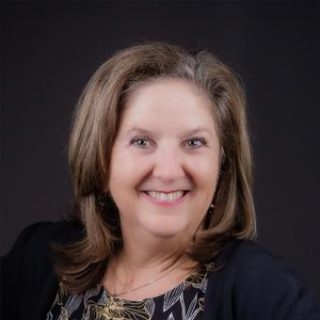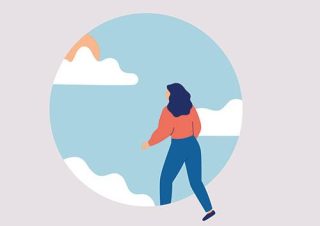Education professionals face myriad problems of practice, especially in the face of current trauma, injustice, and other stressors. To address those challenges, educators should work collaboratively to target the sources, not just the symptoms, of the problems. Asking why can begin to surface root causes, which may be related to systems, structures, and processes. Getting at the actual problem and confronting the reality of the situation invites the opportunity for effective, lasting change (Langley et al., 2009).
We encourage educators to tackle pressing problems of practice using improvement science, a process for solving complex, persistent challenges by learning deeply about a problem and the systems that produce it, and then designing steps to address it (Carnegie Foundation for the Advancement of Teaching, 2020). Improvement science focuses on determining “what works, for whom, and under what conditions” (Bryk et al., 2015, p. 13). It requires interrogating the context, system, and elements within the system that might be leading to the current results.
Improvement science invites disciplined inquiry within a collaborative team setting (Bryk et al., 2015). This helps educators avoid the tendency to “jump to solutions and not think deeply about the problems we are trying to solve” (Grunow, 2012). Taking time to understand the problem by asking why, honoring the input of the user (i.e. those experiencing the problem), and testing incremental change ideas are three critical components to keep in mind.
Asking why
Think of a curious young child who asks “why?” and then, after hearing an initial explanation, keeps drilling down with a series of “why?” questions. To start thinking like an improvement scientist, one must act a little bit like that child, digging deeply to get to the root of the problem.
For instance, let’s say a school is experiencing frequent teacher absences. One administrator suggests requiring teachers to supply a doctor’s note when they call in absent to discourage absences that aren’t sick days. Another administrator suggests a different approach: figuring out why teachers are calling in sick. She suspects that cracking down on sick days won’t address the real issue and that, even if the need for substitutes abates, the unaddressed actual problem will likely just manifest as other symptoms to which administrators will have to react.
After choosing to delve into the root cause, the school uses a team-based brainstorming exercise called the five whys (Spaulding & Hinnant-Crawford, 2019) that involves asking “why” several times to get closer and closer to a hypothesized root cause. (Note: Despite the exercise title, team members may need to ask why more or fewer than five times). With a purposeful improvement team composed of administrators, teachers, and staff at the school, this exercise might look something like this:
- Why are teachers tending to call in for a substitute? One member of the improvement team says, “Because teachers are exhausted and stressed.”
- Why are teachers stressed? An instructional coach on the improvement team says, “Because there is so much on their plate.
- Why do teachers feel like there is so much on their plate? A teacher on the improvement team says, “Well, one thing is because the pace of the curriculum is super demanding. It’s unrealistic, especially as students come back to face-to-face learning environments with varied e-learning experiences. Plus, the accountability reports due to the principal and the district each week are burdensome and do not support teachers’ instructional practice.”
- Why are the accountability reports a source of stress? Another teacher on the improvement team says, “That reporting form contains so much detail that it feels pointless, and the same info needs to be inputted every single week. The form takes a lot of time and doesn’t provide a whole lot of value to me.”
- Why are the accountability reports designed this way? The teachers and instructional coach on the improvement team answer in unison, “We don’t know. We were just handed it to do. It’s been like this for the last two years.”
As a result of asking “why?” multiple times, the administrators now have a clearer understanding of one potential source of teacher stress that is in the locus of control of the administrators — onerous accountability reports — that might be contributing to the problem of teacher stress and resulting absenteeism.
Honoring user input
This example highlights a critical component of understanding the problem: talking with people. By “people,” we mean those who are involved and impacted (Hinnant-Crawford, 2020). Reaching out to those most affected by the problem — teachers, in this case — is vitally important. One technique for deep listening is conducting empathy interviews, which have been described in previous issues of The Learning Professional (see learningforward.org/journal/supporting-each-other/empathy-interviews/).
The information gathered can be used for further discussion, analysis, and reflection. A fishbone diagram is a helpful tool for taking those next steps. It offers a visual representation of what might be contributing to the problem. Each “bone” in the fish is labeled with a contributing cause. One or more bones in the diagram can then be selected as the focus of a driver diagram, which maps out a team’s theory of improvement.
A driver diagram is a tool that articulates and organizes the team’s goal, drivers that impact that goal, and change ideas the team hypothesizes could positively impact their aim. The driver diagram also helps illustrate the team’s theory of improvement in an if-then statement (e.g. if we [change idea to test], then it will impact [name the driver(s)], and we will address [goal/aim]). In our example, a driver diagram can illustrate a theory of improvement such as: If we collaborate with teachers to make the accountability form shorter and more applicable to instruction (change idea), then professional culture will improve (e.g teachers feel less burdened and frustrated) (driver), and teacher absences will decrease by 30% in the next semester (aim).
Testing incremental change ideas
With that if-then statement in place, team members can start testing strategies to chip away at the problem — in this case, redesigning the form with teacher input to make sure it is valuable and not overly time-consuming. Plan-do-study-act cycles create a structure for testing the change idea. After the plan and initial do phases, team members examine what has happened so far (study) and adjust the plan and actions accordingly.
A key part of this approach is ongoing data-gathering and assessment of progress. If the change idea does not seem to be leading to progress, the idea can be adapted and retested or even abandoned to test a new change idea. In the improvement science process, failed ideas are just as important as successful ideas because there is valuable information to learn from them.
If the change idea seems to work in one small setting, the team can scale it incrementally to broader settings and test its impact there. Additionally, or alternatively, team members can identify other drivers of the problem and change ideas to test. For example, even if redesigning the form helps teachers feel less stressed, there are likely to be other causes contributing to their stress (such as pace of the curriculum and students’ social and emotional needs). The goal is not to assume there is a singular cause and solution that will fix everything but to be intentional and strategic about targeting specific elements of the problem.
Challenges and strategies
Using an improvement science framework is advantageous and often rewarding, but is not without challenges. Here are a few common challenges and considerations for preventing and addressing them.
Selecting the right problem
Sometimes it’s convenient to choose a problem because the district or school has already identified that area as a priority, such as increasing low mathematics scores. But a school likely has additional critical problems that may or may not be directly related to math but need attention, like students’ senses of belonging, student tardiness, or teachers’ instructional observation procedures as examples.
To find the right problem to tackle, teams must explore different avenues and devote time and resources to determine what is important, needs improving, and is in their locus of control (Perry et al., 2020). Exercises that invite deep understanding (e.g. school-based data, scanning literature, fishbone diagrams, empathy interviews) can highlight where an improvement team can focus.
By gathering information from multiple sources, including the users, the team will deepen what they know about a problem (Carnegie, 2020). In addition, we believe that selecting a problem for improvement should prioritize increasing equity and the educational experiences of all students, with particular attention to social justice (Hinnant-Crawford, 2020; Perry et al., 2020).
Jumping to solutions versus slowing down to improve
It takes humility to acknowledge you probably do not have the right solution yet, and many education leaders may be tempted to provide a solution immediately since they are professionally socialized to fix problems right away, not to mention pressured by superiors and outside forces to make changes fast. Improvement science is not a quick process.
But as one education leader we worked with noted, slowing down and digging deep revealed more. This leader reflected that she was “not sure if we did it in a more traditional way, we would’ve gotten” to the solution and progressed as effectively. One way to slow down is to let the data guide your pace instead of letting urgency take over.
Engaging in the critical steps of the process
To really engage in improvement science and see positive changes, it’s important to engage in the whole process, not just parts. Although improvement science is flexible and allows for the use of different tools and measures based on varying contexts and needs, it is critical for some key elements and steps to be in place. They include thoroughly examining root causes to get to the right problem, including users in defining the problem, brainstorming change ideas that are closely aligned to the root causes, and measuring the degree of success of both specific change ideas and improvement aims or goals to answer “what works, for whom, and under what conditions” (Bryk et al., 2015, p. 13).
The approach is seemingly simple but is actually quite complex. Sometimes schools and organizations think they are doing improvement science because they are doing parts of the process, such as plan-do-study-act cycles, but elements like understanding the problem before testing solutions can get overlooked, reducing the potential of this approach.
Although schools are already focused on outcome data, such as formative and summative assessment scores, one area that can be particularly challenging is measuring and documenting the successes of the day-to-day implementation of the change idea. Implementation data are just as important as outcome data for improvement science. Routines that dedicate time in the calendar and the use of protocols (e.g. fishbone, plan-do-study-act forms) can help support the team in staying in a disciplined inquiry space. If possible, it is helpful to have a dedicated staff member or improvement coach to help shepherd the improvement team’s progress.
Making space for developing collaborative structures
Reaching out to others for input can be tough for many educators who simply want to get things done. It requires a relinquishing of control that some may not be used to, and it takes time. But that time is well spent. Improvement cannot be done by one or two isolated individuals.
There is an impressive amount of professional expertise within school buildings. Teachers, administrators, and student support staff bring deep understanding of various aspects of education, and all have valuable insights to contribute. Harnessing their expertise is a critical move for improvement scientists. One educator we worked with noted the importance of collaboration: “It was more of a team approach [to problem-solving] in multiple ways. I think the people who were on our leadership team this year were all very unified in this approach and then they brought in the teacher voice. … I see our collective ownership building.”
“We don’t have time for this!”
The improvement science process invites educators to learn quickly through small, incremental steps. This is at odds with popular messages about how school improvement should work and with the urgent demands that school leaders and teachers face every day. It can feel intimidating, or even impossible, to focus on the process of incremental change when you are in the midst of dealing with urgent issues.
It’s helpful to keep in mind that improvement is not just another thing to do, but a strategic way of approaching pressing problems of practice. We suggest integrating the school improvement plan with an improvement science framework. This can result in the whole school making larger, sustaining gains, even if they come at a slower pace.
Understanding improvement science
Using an improvement science approach to address problems of practice requires a shift in mindset and a change in habits, from rushing to fix a problem to going slow to learn and improve quickly. It can feel overwhelming.
To make it feel more manageable, we recommend focusing on asking why and listening to the answers. This requires educators to work with humility, curiosity, and collaboration. In that spirit, we encourage professional educators to explore resources to increase their familiarity with improvement science. Practicing assuming you do not have all the information will allow you to learn more and target resources to find and address the root causes of the pressing problems in schools.
Related resource: What Matters Now Network
Learning Forward’s What Matters Now Network, which ran from 2016 to 2021, offers an example of improvement science in practice. The network brought together three state coalitions, composed of educators at multiple levels in Ohio, Maryland, and Rhode Island, to improve instruction and make progress toward achieving content standards.
Learning Forward supported the state coalitions to learn about improvement science practices, create driver diagrams, and engage in multiple plan-do-study-act cycles aimed at their unique goals: increasing teacher capacity to identify and implement Next Generation Science Standards-aligned professional learning and instructional resources in Maryland; using collaborative learning teams to strengthen teacher practices for pre-K-3 literacy outcomes in Ohio; and increasing teacher engagement in examining student data and reflective instructional practice to meet identified student needs in Rhode Island.
An evaluation by WestEd found that the network’s improvement cycles improved teachers’ knowledge and skills, increased the effectiveness of professional learning, improved classroom practices, and increased student learning.
You can read more about the network’s improvement science approach at learningforward.org/journal/february-2019-vol-40-no-1/network-uses-improvement-science-to-scale-up-change/ and about the evaluation findings at learningforward.org/journal/building-community-in-a-divided-world/evaluation-shows-the-impact-of-a-professional-learning-network/.
References
Bryk, A.S., Gomez, L.M., Grunow, A., & LeMahieu, P.G. (2015). Learning to improve. Harvard Education Press.
Carnegie Foundation for the Advancement of Teaching. (2020). The six core principles of improvement. www.carnegiefoundation.org
Grunow, A. (2012). Improvement research: The Carnegie way. Carnegie Commons Blog. www.carnegiefoundation.org/blog/improvement-research-the-carnegie-way/
Hinnant-Crawford, B.N. (2020). Improvement science in education: A primer. Myers Press.
Langley, G.J., Moen, R.D., Nolan, K.M., Nolan, T.W., Norman, C.L., & Provost, L.P. (2009). The improvement guide (2nd ed.). Jossey-Bass.
Perry, J.A., Zambo, D., & Crow, R. (2020). The improvement science dissertation in practice: A guide for faculty, committee members, and their students. Myers Education Press.
Spaulding, D.T. & Hinnant-Crawford, B.N. (2019). Tools for today’s educational leaders. In R. Crow, B.N. Hinnant-Crawford, & D.T. Spaulding (Eds.), The educational leader (pp. 13-41). Meyers Education Press.
Recent Issues
LEARNING DESIGNS
February 2025
How we learn influences what we learn. This issue shares essential...
BUILDING BRIDGES
December 2024
Students benefit when educators bridge the continuum of professional...
CURRICULUM-BASED PROFESSIONAL LEARNING
October 2024
High-quality curriculum requires skilled educators to put it into...
LEARNING TO PIVOT
August 2024
Sometimes new information and situations call for major change. This issue...













